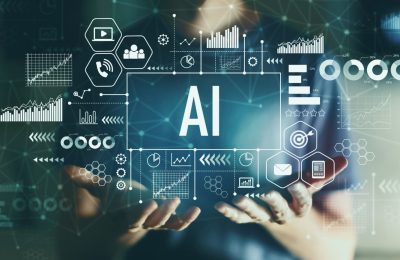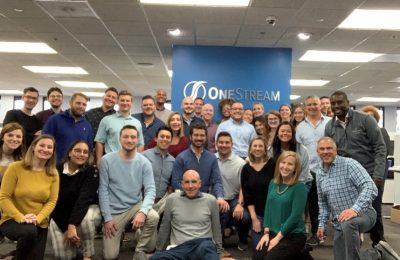This article first appeared on the OneStream blog by Jaclyn Proctor
We’re proud to announce that our very own CEO, Tom Shea, is now a Forbes Tech Council contributor. This means that moving forward, you can expect to see a regular cadence of Tom publishing articles on Forbes that share his expertise on different forms of technology such as Corporate Performance Management (CPM), Predictive Analytics, Artificial Intelligence (AI), Machine Learning (ML), and more. Below you’ll find his first article where he discusses democratizing AI and ML solutions across organizations to surpass the roadblocks in implementing and adequately scaling the solutions to meet business demands. Keep an eye on his profile for the next one.
Democratizing AI To Transform Your Business in An Unpredictable Future
Artificial intelligence (AI) and machine learning (ML) are by no means new concepts for the office of finance. In fact, 59% of finance execs reported they are already investing in the technology. So, why do organizations still face roadblocks in implementing and adequately scaling AI and ML solutions to meet business demands? Because they are not democratizing the technology across their organization.
AI is no longer just a tool for data scientists. To extract the most value from this technology, companies must make it accessible for employees across different lines of business with varying levels of experience. Read on as I dig into the power of AutoAI and ML technology and how it can help businesses scale ML deployments and better plan for an unpredictable future.
Current Hurdles for Companies Using AI Models
You may be thinking that integrating AI technology into your organization is easier said than done. AI models do present their own unique set of challenges. First, these models are both logistically and algorithmically complex to create. It’s difficult to build a single AI model to solve one problem, and even more so to scale models across multiple use cases.
AI models are living organisms. Once built, they are difficult to maintain and train, especially since models are not, and should not be, generalizable. Because of their unique nature, introducing new and potentially surprising or divergent information, like Covid-19 data, for instance, would require manual input and constant retraining across models. This can seem like an insurmountable time suck on already tight resources.
Not only is this troubling from an operational perspective but also from a talent perspective. As employees increasingly seek new jobs due to burnout, it’s critical that organizations prioritize their workloads. Not to mention, data scientists themselves are in short supply, hard to find, and expensive to retain once you do bring them on board. As a result, the burden of data analysis often falls on the financial and business analysts across the enterprise. They need to understand how to create actionable data insights and make the most of them, but that’s often difficult as these employees do not have the knowledge and expertise to effectively analyze data streams like a data scientist would.
That’s where AutoAI tools can demonstrate their value.
How Organizations Can Use AutoAI and ML Solutions To Solve Business Problems
Introducing and implementing AutoAI services and solutions can solve these ML model creation and deployment problems. And when they are built directly into existing platforms, organizations can create predictive solutions that can scale to enterprise needs without the need for large teams of data scientists. In fact, AutoAI can build thousands of ML models in parallel, which, in turn, results in significant time and cost savings. This is beyond what an individual data scientist could ever accomplish, enhancing overall enterprise operations.
Business users can start leveraging AutoAI models in minutes, providing advanced predictive power for a broad range of staff, not just data scientists. More automation means a reduction in non-value-added work for analysts, allowing businesses to obtain deeper insights and anticipate future challenges and opportunities. This is allowing organizations to solve more problems than ever, even with limited data science manpower to do so.
That said, analyst intuition is still critical, no matter the technology the business is leveraging. AI cannot do it alone. There is a level of human intelligence that is still, and will always be, required. Business analysts can supply their knowledge of business events and other factors and inject this into models to make forecasting and planning more powerful. The possibilities become endless when AutoAI models are combined with business intuition and human insights for more intelligent forecasting and analytics.
Lastly, transparency is key. Financial analysts typically do not have full transparency into the AI and ML models that support their planning, decision-making, and reporting. By ensuring that AI models offer a transparent look into the algorithms and forecast drivers behind the data, end-users are provided deep insights into how different factors impact a model’s performance and can leverage the results with more confidence.

How AI Capabilities Can Help Sectors Recover in An Unpredictable Future
If there is something businesses have become comfortable within the last year and a half, it is unpredictability. With this unpredictability, businesses have learned the importance of consistently being prepared for potential disruption and volatility. When AI and ML are implemented correctly, the insights gained can enable businesses to have a level of resilience, bouncing back and moving forward swiftly. Let’s consider some real-world application examples.
In a restaurant environment, for instance, the right AutoAI solution can enable a chain with many menu items and multiple locations to build thousands of ML models in tandem. These models can then help restaurant managers factor in external data like local events, weather forecasts, mask mandates, and more into their daily planning. This can ensure they are well prepared for situations like outdoor dining or an influx of customers and can equip their staffing and inventory ordering according, ultimately maximizing sales and optimizing expenses.
In the retail industry, AI models can help forecast weekly sales and inventory requirements. In an industry deeply impacted by potential supply chain issues, like the ones brought on by the pandemic, having the power to forecast stock challenges is transformative. This is especially true ahead of high-volume times of the year like the holiday season. AI models help to inform current business decisions, learn from new inputs and help enterprises adapt for what lies ahead.
AI Hype Has Become Business Value
AI and ML are finally transitioning from “hype” conversations to real solutions offering direct business value. Technology is no longer a solution seeking a problem. Targeted AI solutions now solve discrete enterprise challenges and bring transparency back into processes. With AutoAI and ML solutions, enterprise analysts and decision-makers are better equipped to forecast and plan for the future, overcoming seasons of unpredictability that have now become the norm.
Learn More
To learn more about how OneStream is enabling customers to democratize AI in their organizations, check out our August 2021 press release announcing the preview of new AI and ML capabilities at our Splash Virtual Experience.



